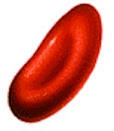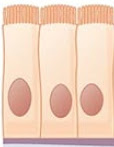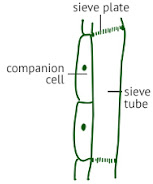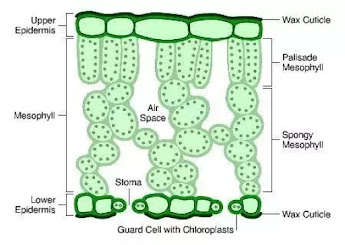- size
- shape
- arrangement
Each type of cell is specialized to carry out a specific function.
Specialized cells found in humans
1. White blood cell
- Various shape
- Function: Destroy pathogen
- X nucleus
- Shape: biconcave disc
- Function: Transport oxygen
- Thin, flat
- Coats the surface of organs
- Arranged as multinuclear striated fibers
- Function: Generate movement
- Long, thin
- Function: Sending nerve impulses
- Has long tail
- Head carries chromosomes from the male
Specialized cells found in plants
- Long
- Function: Absorb water and mineral salts
- Long, continuous hollow tube
- Function: Transport water and mineral salts from roots to other parts of the plant
- Long cylindrical tubes
- Function: Transport organic materials from leaves to storage organs (fruits etc.)
4. Palisade mesophyll cell
- Long cylindrical cells
- Function: Absorb sunlight for photosynthesis
5. Spongy mesophyll cell
- Cells arranged with lots of air space in between
- Function: Allow gases exchange from inside of the leave to palisade mesophyll cells
6. Guard cell
- Modified lower epidermal cells with thicker cell wall on inner side
- Function: Controls opening and closing of stoma (the opening that allows exchange of oxygen and carbon dioxide)











No comments:
Post a Comment